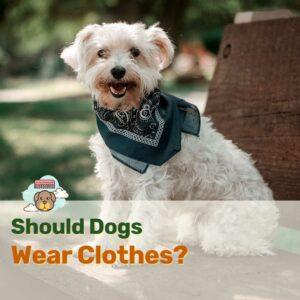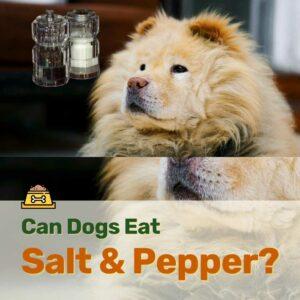For dog lovers, grooming, such as bathing your dog and trimming the nails, is more than just a chore; it’s a way to bond with your pet and keep them healthy. Different dog breeds have varied coat types, each requiring specific care.
This guide will delve into the techniques, tools, and tips on how to brush a dog, with a detailed look at the characteristics and needs of 5 types of dog coats.
1. Double Coats
Coat Characteristics: Breeds like the Siberian Husky and Newfoundland have double coats, consisting of a dense, woolly undercoat and a longer, weather-resistant topcoat. This combination provides excellent insulation but requires diligent care to prevent matting and manage shedding.
Brushing Tools:
- Undercoat Rake: Essential for reaching the thick undercoat and removing loose fur.
- Slicker Brush: Useful for detangling and smoothing the topcoat.
Technique:
- Carefully work the undercoat rake through the undercoat, taking care not to tug at the skin.
- Follow with the slicker brush to detangle and smooth the topcoat, enhancing its natural sheen.
Frequency:
- Brush 2-3 times a week regularly, increasing to daily during heavy shedding periods, typically spring and fall.
2. Short, Smooth Coats
Coat Characteristics: Short-haired breeds like the Labrador Retriever and Beagle have single-layer coats that are generally easier to maintain. However, they can still shed quite a bit and benefit from regular brushing to remove loose hair and distribute skin oils.
Brushing Tools:
- Bristle Brush: Ideal for removing loose hair and promoting a healthy shine.
- Rubber Grooming Mitt: Helps massage the skin, stimulating oil production.
Technique:
- Use the bristle brush in short, even strokes to cover the body, removing loose fur and stimulating the skin.
- The rubber grooming mitt can provide a gentle massage, promoting relaxation.
Frequency:
- Weekly brushing is recommended, although more frequent sessions can help reduce shedding.
3. Long, Silky Coats
Coat Characteristics: Long, silky-coated breeds like the Afghan Hound and Shih Tzu have beautiful yet high-maintenance coats. They are prone to tangles and mats and require regular, thorough grooming to maintain their elegant appearance.
Brushing Tools:
- Pin Brush: Gently removes tangles without damaging the delicate fur.
- Steel Comb: Helps fine-tune the grooming, especially around the face and paws.
Technique:
- Start with the pin brush, using gentle strokes to work through tangles and mats.
- Use the steel comb for more detailed grooming, particularly around delicate areas.
Frequency:
- Daily brushing is crucial to prevent mats and keep the coat sleek and shiny.
4. Wire Coats
Coat Characteristics: Wire-haired breeds like the Scottish Terrier and Wirehaired Dachshund have coarse, wiry outer coats with softer undercoats. These unique coats require specific grooming to maintain their texture and prevent matting.
Brushing Tools:
- Slicker Brush: Ideal for untangling and smoothing the wiry outer coat.
- Stripping Comb: Used to remove dead hair from the undercoat, maintaining the coat’s texture.
Technique:
- Use the slicker brush to gently detangle and smooth the outer coat.
- The stripping comb is essential for maintaining the coat’s rustic texture, used carefully to remove loose undercoat hairs.
Frequency:
- Regular brushing, about 2-3 times a week, with more frequent grooming during shedding seasons.
5. Curly Coats
Coat Characteristics: Curly-coated breeds like Poodles and Bichon Frises have dense, curly fur that easily mats and tangles. These coats require consistent and gentle grooming to maintain their bouncy curls and prevent skin issues.
Brushing Tools:
- Slicker Brush: Effective for navigating through tight curls and preventing mats.
- Detangling Spray: Useful for easing out mats and tangles, making brushing more comfortable.
Technique:
- Use the slicker brush in conjunction with a detangling spray to gently work through the curls, starting from the ends and moving upwards to minimize pulling and discomfort.
- Regular brushing helps maintain the curls’ definition and prevents matting.
Frequency:
- Daily brushing is essential to keep the curls neat and prevent mats from forming.
The Importance and Benefits of Regular Brushing
Regular brushing isn’t just about keeping your dog’s coat looking good; it’s crucial for their overall health. Brushing removes dead hair, dirt, and dander, reduces the likelihood of skin infections, and stimulates blood circulation.
It also helps distribute natural oils throughout the coat, enhancing its health and sheen.
Additionally, regular brushing sessions provide an opportunity to bond with your pet and check for any unusual lumps, bumps, or parasites.
How to Keep Your Dog Calm and Cooperative During Brushing
Not all dogs enjoy being brushed, but with patience and the right approach, you can make it a positive experience.
Start by creating a calm environment and choose a time when your dog is relaxed, like after a walk. Use soothing tones and gentle strokes, and don’t forget to offer plenty of praise and treats.
If your dog is particularly anxious, consider shorter sessions initially, gradually increasing the duration as they become more comfortable.
Tailored Care for Every Coat
In the diverse world of dog breeds, each coat type presents its own set of grooming challenges and rewards. By understanding the specific needs of your dog’s coat and adopting the right techniques and tools, you can ensure their fur remains healthy, beautiful, and a source of pride.
Remember, a well-groomed dog is a happy and healthy dog, so embrace the grooming journey with love and care.






